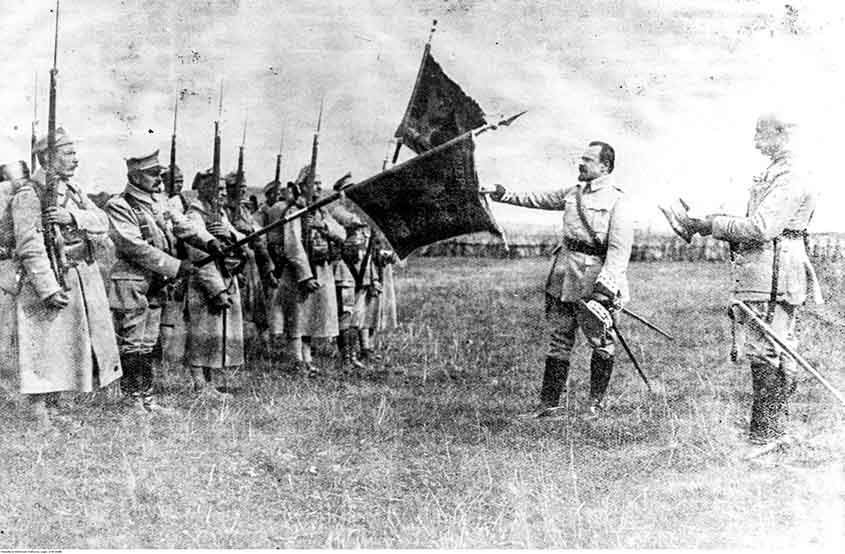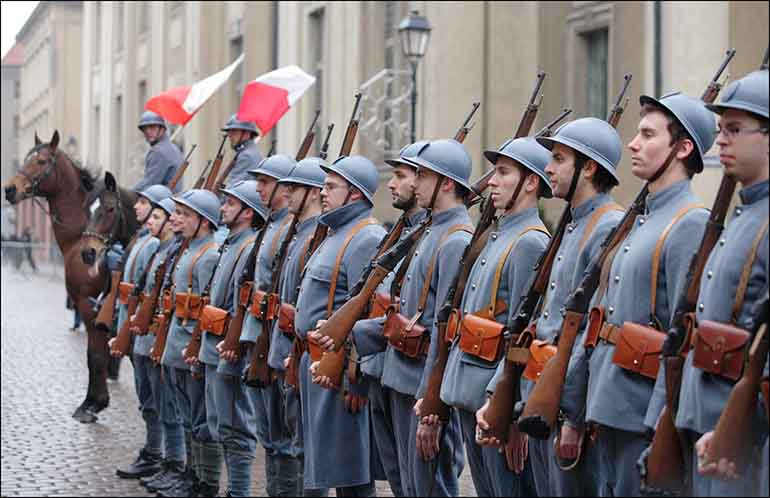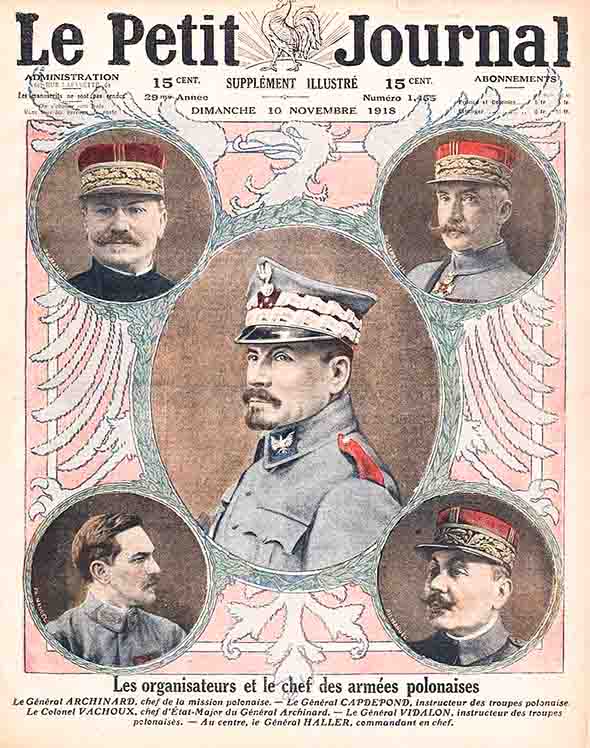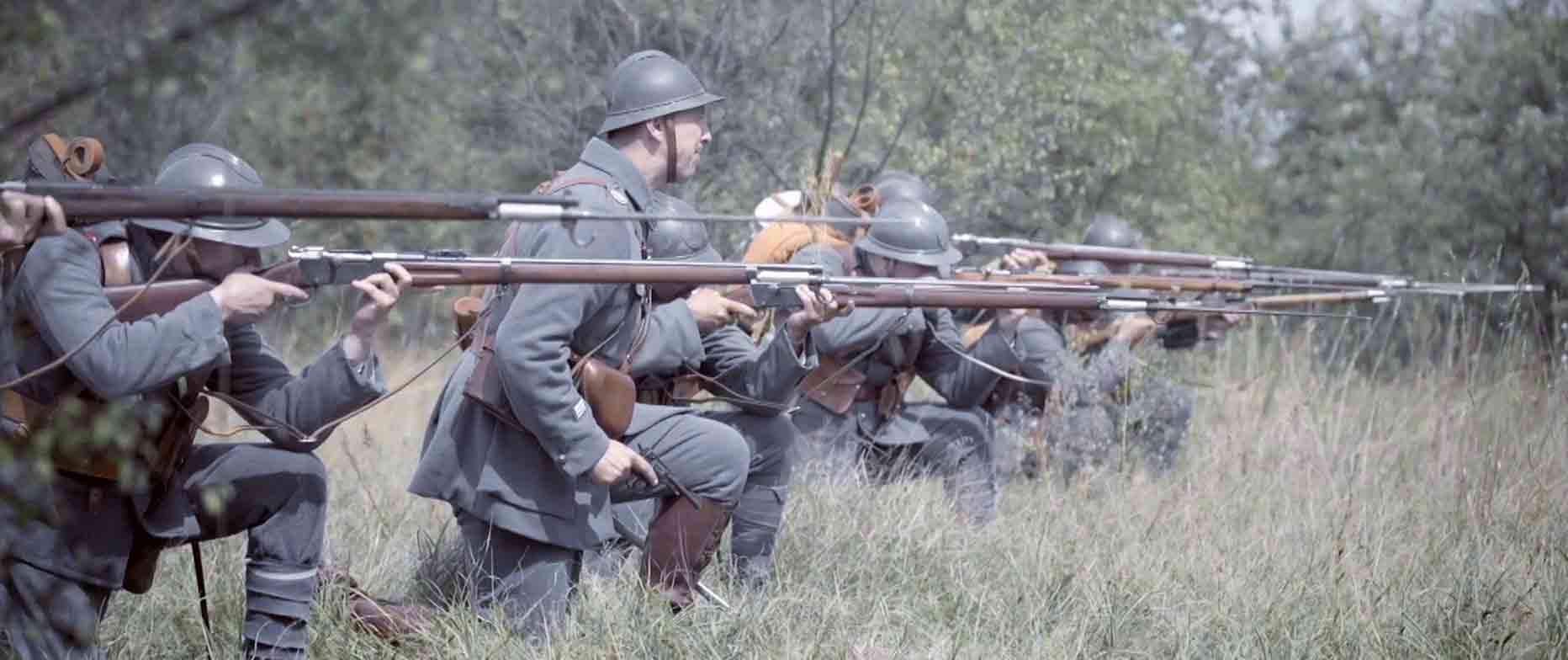On October 4, 1918, General Józef Haller took command of the Polish Army in France. He was the first Polish commander of this formation, nicknamed the "Blue Army" (due to the color of its uniform), which operated in exile during World War I. The first commander of the "Blue Army" was the French General Louis Archinard.
This armed formation was established in France in 1917 pursuant to a decree issued by French President Raymond Poincaré on June 4th. This occurred at the initiative of Roman Dmowski and the Polish National Committee. The army was to fight under its own Polish banner, with the French authorities responsible for equipment and maintenance. Polish volunteers from France, the Netherlands, and England enlisted in the army, later including prisoners of war captured during the war. The officer corps was composed primarily of Frenchmen.

Polish Army in France - General Józef Haller's oath NAC 1-H-260b (Source: National Digital Archives via Wikipedia)
Subsequent actions by Ignacy Jan Paderewski, who was the representative of the Polish National Committee in the USA, contributed to an increase in the number of volunteers for the army by 20,000 soldiers from the United States and Canada.
In the first half of 1919, the soldiers found themselves on Polish soil and were immediately sent to the south-eastern borderlands.
In June 1919, Józef Haller was dismissed from his position as commander of the "Blue Army." From September 1, the Army officially operated within the structures of the Polish Army. Haller, in turn, was entrusted with command of the Southwestern Front.
In the autumn of 1919, he became commander of the Pomeranian Front to occupy Pomerania, which had been granted to Poland under the terms of the Treaty of Versailles. On February 10, 1920, General Haller performed the symbolic wedding of Poland to the Baltic Sea in Puck.
Unfortunately, the fate of the Blue Army is not only a glorious battlefield, but also a history of personal political intrigues. We invite you to read our articles about the Blue Army (links in the right column, opposite) — Editorial Team.
Translation from Polish by Andrew Wozniewicz.












